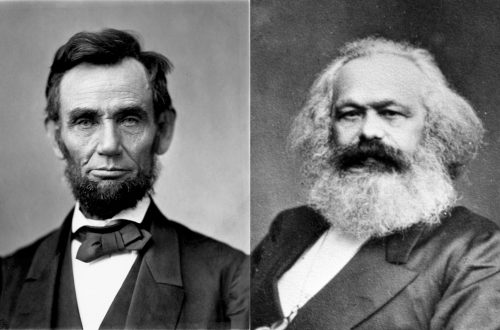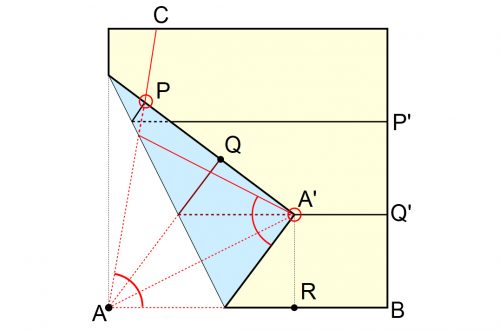Editorial Quick Take
You are almost certainly aware of Albert Einstein. You could probably even pick him out of a lineup. And even if you can’t explain his greatest accomplishment, the “theory of relativity,” you’ve at least heard of it. You have likely also heard of “quantum mechanics.” In the public imagination, these are still thought of as groundbreaking physics – and strange stuff at that. But did you know that relativity and quantum mechanics are now over one hundred years old? All the groundbreaking work in these areas was done in the early 20th century, a long time ago in science terms.
There is another area of theoretical physics that is just as mind-bending. But it is something far fewer people seem to have heard of: quantum field theory. Quantum field theory combines classical field theory, special relativity, and quantum mechanics to describe the fundamental nature of all reality. In the late 1920’s and early 30’s towering figures like Werner Heisenberg (of the Heisenberg uncertainty principle), Max Born, Pascual Jordan, Erwin Schrödinger (of Schrödinger’s cat), Paul Dirac, Wolfgang Pauli, Enrico Fermi and others each contributed elements to what would come to be known as quantum field theory or QFT.
Before the rise of quantum field theory, science in the West had been driven by a belief in some version of “atomism.” Our word “atom” comes from Greek ἄτομον (atomon) meaning “unable to be cut or divided.” The known universe, it was thought, could best be understood by searching for the smallest little bits of matter that couldn’t be further divided. If you could find these, you would have found the building blocks of everything. The theory dates to the 5th century B.C. and was first articulated by the Greek philosopher and scientist, Democritus.
Skipping ahead somewhat, you are probably more familiar with the periodic table of elements. From the late 18th century A.D. well into the 20th century, it was this table (constantly being revised and adjusted) on which the most fundamental ‘bits’ of the universe were catalogued. A single atom of each element was understood as the smallest unit of that element that could not be divided. There were atoms of hydrogen, lead, gold, helium, and so forth.
In 1897, however, J.J. Thomson, a professor of physics at the University of Cambridge, discovered something even smaller than a hydrogen atom (the smallest known thing in the universe at that time). This was the first sub-atomic particle, later named the electron. Eventually, all atoms were found to be composed of electrons, protons, and neutrons. Each atom of each element was really just a different arrangement of these three basic particles. Even with the discovery of subatomic particles, however, these tiny bits of matter were thought to be stable if not eternal. These were still the most fundamental reality of the physical universe – what was really real.
Over the course of the 20th century, quantum field theory, the discoveries that led to it, and the discoveries that come from it would radically overturn this notion. Beginning with studies of electromagnetism and proceeding from there, scientists have come to understand reality in such a way that there really is no such thing as tiny bits of matter that exist independently and that cannot be divided. Atomism (in any traditional sense) is dead. Reality is not what we thought it was.
Instead, the most fundamental building blocks of the universe appear to be fields of matter. Each field is associated with a unique “particle,” but that particle is best defined not as a “tiny bit of matter” but simply as a particularly excited state of the broader field. Each so-called particle in that field is really a “quantum” of the field itself. And you can think of a “quantum” as a concentration, vibration, or cluster of the field itself.
You might want to read that paragraph again.
Still hard to envision? Try this. Imagine a sheet of silk stretched out loosely, moving gently in a breeze. If the breeze changed direction abruptly, you may witness a “bunching” of the fabric in several locations. You might see a ripple – a bunch that is moving in a direction. Two of these ripples might collide with and disrupt each other. You would see and describe the bunch and the ripple as if they were things in and of themselves. If you dropped the silk and it was still, you might say, “Look there, a bunch in the fabric.” But if pressed you would acknowledge that what was really real was the fabric itself. The bunches and ripples are concentrations of the fabric.
Now imagine stretching that sheet of fabric out into three dimensions like an ocean. Set it in motion, and you have a quantum field.
Physicists have currently identified seventeen quantum fields that make up the world around us, each corresponding to one of the seventeen quantum particles, which are produced by the field and exist, like ripples in silken fabric, as functions of that field.
So in terms of quantum field theory, everything in the universe is not a constellation of eternal atoms but a function of seventeen overlapping and simultaneous oceans of matter, elegantly concentrated and arranged.
Perhaps the world is more like Prospero said than we thought:
And like the baseless fabric of this vision,
in Shakespeare’s The Tempest
The cloud-capp’d tow’rs, the gorgeous palaces,
The solemn temples, the great globe itself,
Yea, all which it inherit, shall dissolve,
And, like this insubstantial pageant faded,
Leave not a rack behind. We are such stuff
As dreams are made on.
For a deeper dive into quantum field theory, watch David Tong’s lecture at Cambridge University below. If you’re really interested, Dr. Tong’s course in QFT is also available online through Cambridge University.
Header Image: “3D Visualization of Quantum Fluctuations” by Ahmed Neutron, CC BY-SA 4.0. This is a visualization of fluctuations in a quantum field as they occur in a complete vacuum.





